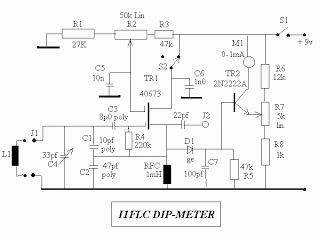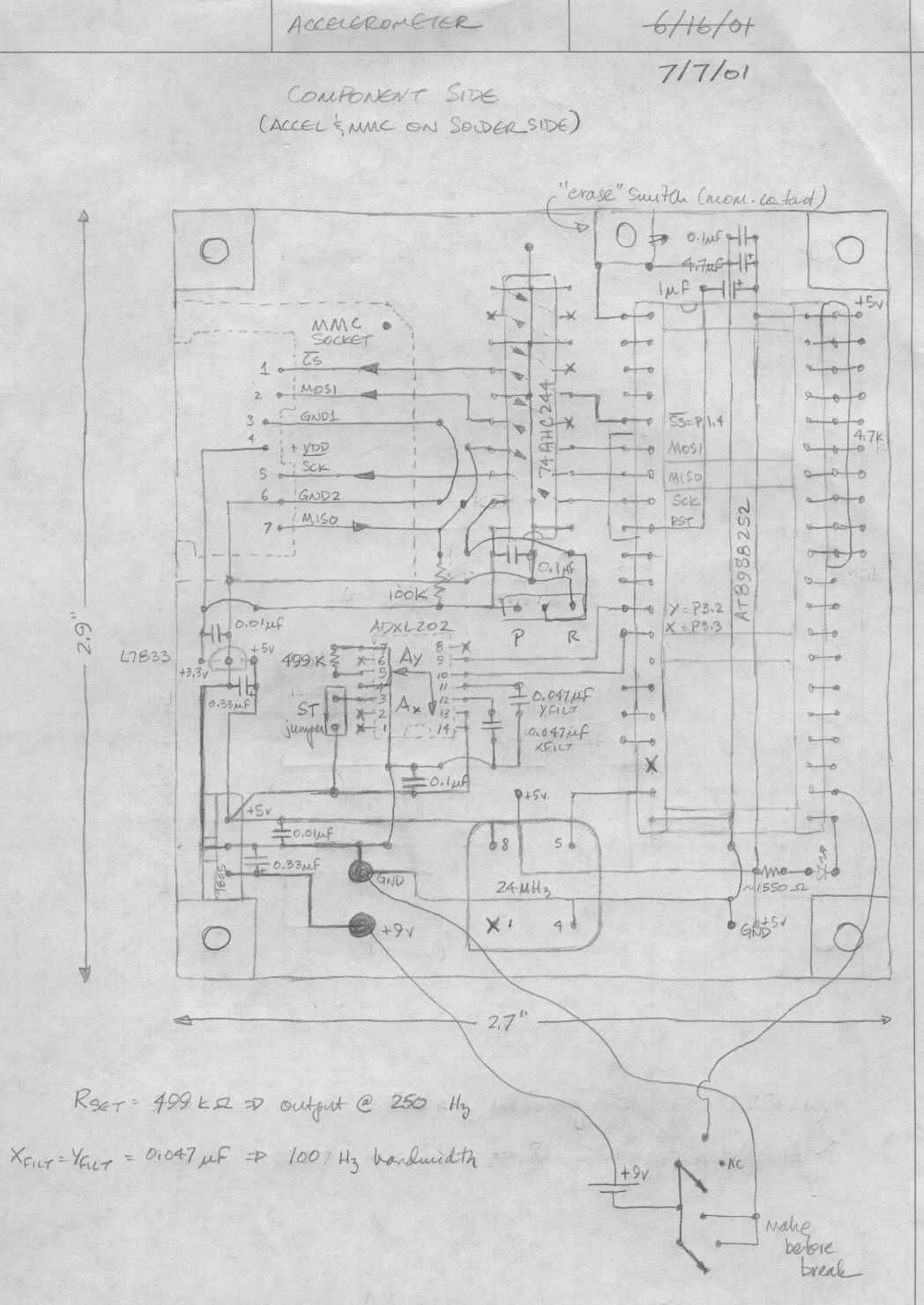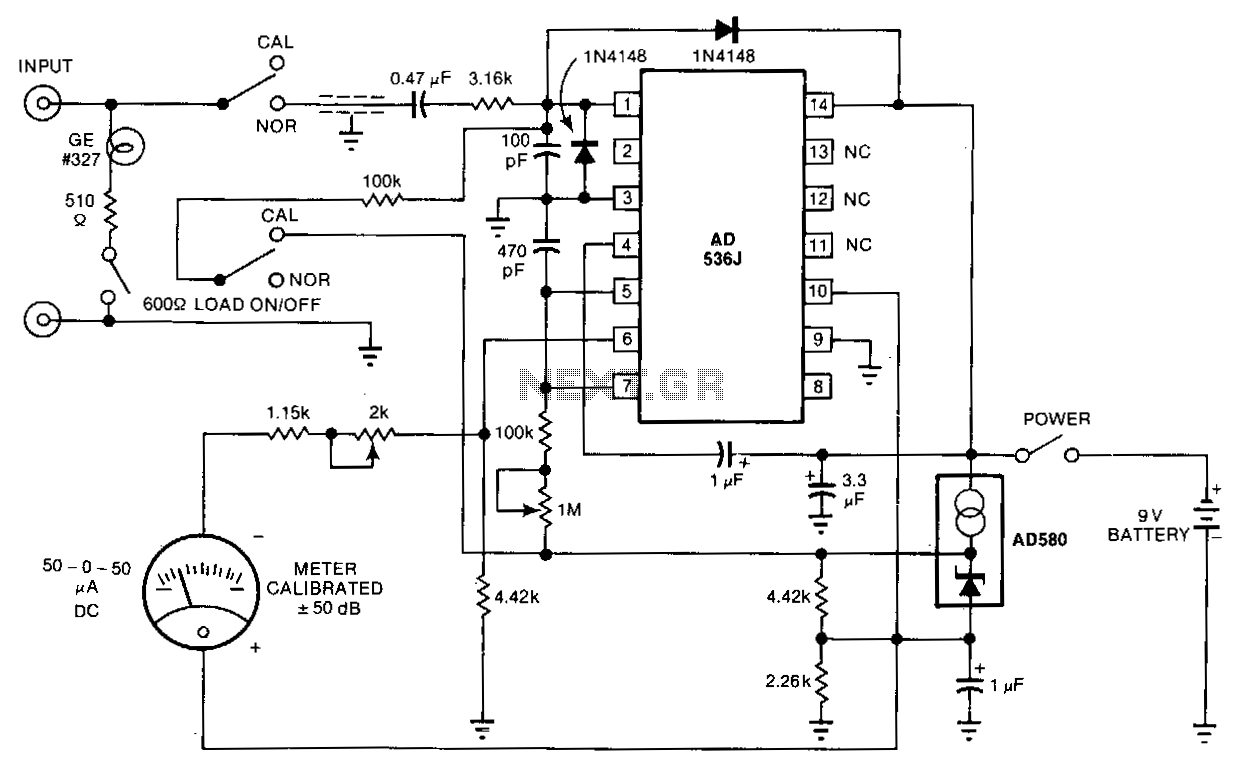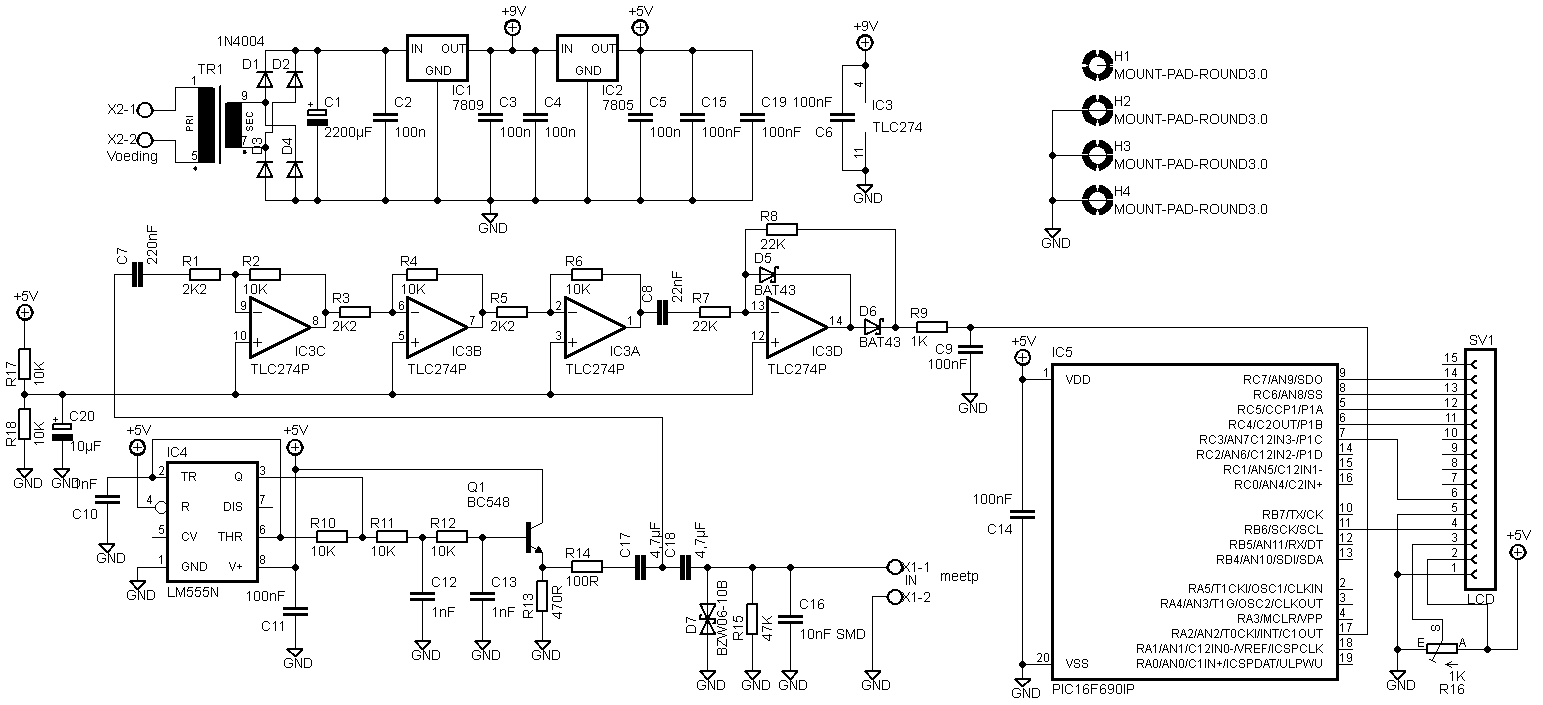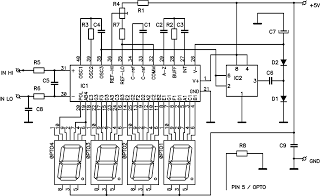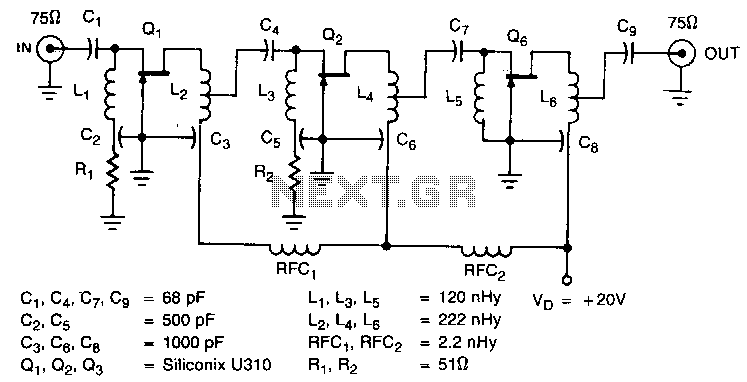
Wide Dynamic Range Field Strength Meter

A field strength meter is a useful tool for locating a transmitter. However, a sensitive field strength meter has limitations: it responds to nearly any RF signal entering its input. This characteristic reduces the effective sensitivity of the field strength meter, as nearby RF sources can mask the desired signal. This issue can be somewhat alleviated by incorporating a simple tuned RF stage at the input, which is often sufficient. However, a basic tuned circuit is only broadly selective. A single-tuned filter will respond to a range of frequencies, meaning that a 2-meter filter will pick up nearly any signal within the 2-meter band. A narrow filter can be challenging to tune, but it is manageable by peaking on the desired signal or using a nearby transmitter to assist in tuning. An alternative approach is to utilize a receiver. While many receivers have "S-meters," few are effective over a wide dynamic range, often saturating even on relatively weak signals. An adjustable attenuator may be employed, but the limited range of the radio's S-meter can complicate monitoring and adjusting signal levels. Another option is to modify an existing receiver to interface with a Wide Dynamic Range Field Strength Meter, which is the focus of this discussion. The modification requires sufficient space within the receiver for additional circuitry to extract the IF signal. The modification should also retain the original functionality of the radio, allowing it to be used as a handheld transceiver (HT). The Henry Tempo S-1 is a basic 2-meter-only radio and was the first synthesized HT available in the U.S. However, it has a threaded antenna connection instead of a standard BNC connector, necessitating user modification for compatibility with other antennas. Additionally, it features a built-in, non-removable battery and operates at a power supply voltage below 11 volts. The Kenwood TH-21 is another basic 2-meter-only radio that uses a unique RCA-like threaded connector, compatible with readily available RCA-BNC adapters. Its compact size may limit the space for added circuitry, and it operates at around 10 volts. The Icom IC-2A/T was once a popular choice among 2-meter HTs, operating directly on 12 volts, featuring a standard BNC antenna connector, and providing ample interior space for circuit modifications. Each of these radios is a simple, thumbwheel-switch tuned synthesized model, with the Icom being a common choice, often available on platforms like eBay for around $40, alongside additional accessories.
A field strength meter is an essential instrument for radio frequency (RF) applications, particularly for locating and analyzing the strength of RF signals from transmitters. The inherent limitations of sensitive field strength meters arise from their broad response to various RF signals, which can lead to interference and masking of the intended signal. To counteract this, the integration of a tuned RF stage at the input enhances selectivity, allowing the meter to focus on specific frequencies. However, this approach has its constraints, as single-tuned filters can only provide a broad range of frequency response, which may not be adequate for precise measurements.
For improved performance, a narrowband filter could be employed, although tuning such filters requires careful adjustment, often necessitating a nearby signal source for effective calibration. This tuning process can be facilitated by using existing receivers, which can provide a reference signal. The challenge with many receivers is their limited dynamic range on S-meters, which may not accurately reflect weaker signals, leading to potential misinterpretations.
The proposed modification involves adapting a standard receiver to work in conjunction with a Wide Dynamic Range Field Strength Meter. This adaptation requires careful design to ensure that additional circuitry for extracting the Intermediate Frequency (IF) signal can be accommodated within the receiver's housing without compromising its original functionality. This ensures that the modified receiver can still operate as a standard handheld transceiver while providing enhanced measurement capabilities.
The selection of a suitable radio for modification is crucial. The Henry Tempo S-1, while a pioneering model, presents some challenges due to its non-standard antenna connection and built-in battery limitations. The Kenwood TH-21, although compact and featuring an adapter-compatible connector, may lack sufficient space for the necessary modifications. The Icom IC-2A/T, however, stands out as an excellent candidate due to its standard BNC connector, compatibility with a 12-volt power supply, and ample internal space for additional circuitry.
In summary, the development of a modified receiver paired with a Wide Dynamic Range Field Strength Meter can significantly enhance the ability to locate and analyze RF signals effectively. The careful selection of the base radio and thoughtful design of the modification will yield a powerful tool for RF engineers and hobbyists alike.A field strength meter is a very handy tool for locating a transmitter. A sensitive field strength meter by itself has some limitations, however: It will respond to practically any RF signal that enters its input. This property has the effect of limiting the effective sensitivity of the field strength meter, as any nearby RF source (or even ones f
ar away, if the meter is sensitive enough. ) will effectively mask the desired signal. This property can be mitigated somewhat by preceding the input with a simple tuned RF stage and, in most cases, this is adequate. A simple tuned circuit does have its limitations, however: It is only broadly selective. A simple, single-tuned filter will have a response encompassing several percent (at best) of the operating frequency.
This means that a 2 meter filter will respond to nearly any signal within to the 2 meter band. A very narrow filter can be tricky to tune. This isn`t usually too much of a problem as one can peak on the desired signal (if it is close enough to register) or use your own transmitter (on a nearby frequency) to provide a source of signal on which the filter may be tuned. An obvious approach is to use a receiver. While many receivers have "S-meters" on them, very few of them have meters that are truly useful over a very wide dynamic range, most firmly "pegging" even on relatively weak signals.
While an adjustable attenuator (such as a step attenuator or offset attenuator) may be used, the range of the radio`s S-meter itself may be so limited that it is difficult to manage the observation of the meter and adjusting the signal level to maintain an "on-scale" reading. Another possibility is to modify an existing receiver and interface it with something like the Wide Dynamic Range Field Strength Meter - and that is what is discussed here.
It had to have enough room inside it to allow the addition of some extra circuitry to allow "picking off" the IF signal. After all, that`s the entire point of this exercise. It had to be easy to use. Because one may not use this receiver too often, it`s best not to pick something overly complicated and would require a manual to remind one how to do even the simplest of tasks.
The radio is still a radio. Another goal of the modification was that the radio had to work exactly as it was originally designed - that is, you can still use it as an HT! The Henry Tempo S-1. This is a very basic 2 meter-only radio and was the very first synthesized HT available in the U. S. One disadvantage is that, by default, it uses a threaded antenna connection rather than a more-standard BNC connector and would thus require the user to install one to allow it to be used with other types of antennas.
Another disadvantage is that it has a built-in non-removable battery. It`s power supply voltage is limited to under 11 volts. (The later Tempo S-15 has fewer of these disadvantages and may be better, but I am not too familiar with it. ) The Kenwood TH-21. This, too, is a very basic 2 meter-only radio. It uses a strange RCA-like threaded connector, but this mates with easily-available RCA-BNC adapters.
Its disadvantage is that it is small enough that the added circuitry may not fit inside. It, too, has a distinct limitation on its power supply voltage range and requires about 10 volts. The Icom IC-2A/T. This was, at one time, one of the most popular 2 meter HTs. It can operate directly on 12 volts, has a standard BNC antenna connector, and has plenty of room inside the case for the addition of a small circuit. Each of these radios is a plain, thumbwheel-switch tuned synthesized, plain-vanilla radio. As you might have guessed, I chose the Icom (it is also the most common) and obtained one on Ebay for about $40 (including accessories) and another $24 bought an IC-8, an 8-cell alkaline battery holder (from Batteries America ) that is normally populated with 2.
5 amp-hour NiMH cells. I will often use this radio 🔗 External reference
A field strength meter is an essential instrument for radio frequency (RF) applications, particularly for locating and analyzing the strength of RF signals from transmitters. The inherent limitations of sensitive field strength meters arise from their broad response to various RF signals, which can lead to interference and masking of the intended signal. To counteract this, the integration of a tuned RF stage at the input enhances selectivity, allowing the meter to focus on specific frequencies. However, this approach has its constraints, as single-tuned filters can only provide a broad range of frequency response, which may not be adequate for precise measurements.
For improved performance, a narrowband filter could be employed, although tuning such filters requires careful adjustment, often necessitating a nearby signal source for effective calibration. This tuning process can be facilitated by using existing receivers, which can provide a reference signal. The challenge with many receivers is their limited dynamic range on S-meters, which may not accurately reflect weaker signals, leading to potential misinterpretations.
The proposed modification involves adapting a standard receiver to work in conjunction with a Wide Dynamic Range Field Strength Meter. This adaptation requires careful design to ensure that additional circuitry for extracting the Intermediate Frequency (IF) signal can be accommodated within the receiver's housing without compromising its original functionality. This ensures that the modified receiver can still operate as a standard handheld transceiver while providing enhanced measurement capabilities.
The selection of a suitable radio for modification is crucial. The Henry Tempo S-1, while a pioneering model, presents some challenges due to its non-standard antenna connection and built-in battery limitations. The Kenwood TH-21, although compact and featuring an adapter-compatible connector, may lack sufficient space for the necessary modifications. The Icom IC-2A/T, however, stands out as an excellent candidate due to its standard BNC connector, compatibility with a 12-volt power supply, and ample internal space for additional circuitry.
In summary, the development of a modified receiver paired with a Wide Dynamic Range Field Strength Meter can significantly enhance the ability to locate and analyze RF signals effectively. The careful selection of the base radio and thoughtful design of the modification will yield a powerful tool for RF engineers and hobbyists alike.A field strength meter is a very handy tool for locating a transmitter. A sensitive field strength meter by itself has some limitations, however: It will respond to practically any RF signal that enters its input. This property has the effect of limiting the effective sensitivity of the field strength meter, as any nearby RF source (or even ones f
ar away, if the meter is sensitive enough. ) will effectively mask the desired signal. This property can be mitigated somewhat by preceding the input with a simple tuned RF stage and, in most cases, this is adequate. A simple tuned circuit does have its limitations, however: It is only broadly selective. A simple, single-tuned filter will have a response encompassing several percent (at best) of the operating frequency.
This means that a 2 meter filter will respond to nearly any signal within to the 2 meter band. A very narrow filter can be tricky to tune. This isn`t usually too much of a problem as one can peak on the desired signal (if it is close enough to register) or use your own transmitter (on a nearby frequency) to provide a source of signal on which the filter may be tuned. An obvious approach is to use a receiver. While many receivers have "S-meters" on them, very few of them have meters that are truly useful over a very wide dynamic range, most firmly "pegging" even on relatively weak signals.
While an adjustable attenuator (such as a step attenuator or offset attenuator) may be used, the range of the radio`s S-meter itself may be so limited that it is difficult to manage the observation of the meter and adjusting the signal level to maintain an "on-scale" reading. Another possibility is to modify an existing receiver and interface it with something like the Wide Dynamic Range Field Strength Meter - and that is what is discussed here.
It had to have enough room inside it to allow the addition of some extra circuitry to allow "picking off" the IF signal. After all, that`s the entire point of this exercise. It had to be easy to use. Because one may not use this receiver too often, it`s best not to pick something overly complicated and would require a manual to remind one how to do even the simplest of tasks.
The radio is still a radio. Another goal of the modification was that the radio had to work exactly as it was originally designed - that is, you can still use it as an HT! The Henry Tempo S-1. This is a very basic 2 meter-only radio and was the very first synthesized HT available in the U. S. One disadvantage is that, by default, it uses a threaded antenna connection rather than a more-standard BNC connector and would thus require the user to install one to allow it to be used with other types of antennas.
Another disadvantage is that it has a built-in non-removable battery. It`s power supply voltage is limited to under 11 volts. (The later Tempo S-15 has fewer of these disadvantages and may be better, but I am not too familiar with it. ) The Kenwood TH-21. This, too, is a very basic 2 meter-only radio. It uses a strange RCA-like threaded connector, but this mates with easily-available RCA-BNC adapters.
Its disadvantage is that it is small enough that the added circuitry may not fit inside. It, too, has a distinct limitation on its power supply voltage range and requires about 10 volts. The Icom IC-2A/T. This was, at one time, one of the most popular 2 meter HTs. It can operate directly on 12 volts, has a standard BNC antenna connector, and has plenty of room inside the case for the addition of a small circuit. Each of these radios is a plain, thumbwheel-switch tuned synthesized, plain-vanilla radio. As you might have guessed, I chose the Icom (it is also the most common) and obtained one on Ebay for about $40 (including accessories) and another $24 bought an IC-8, an 8-cell alkaline battery holder (from Batteries America ) that is normally populated with 2.
5 amp-hour NiMH cells. I will often use this radio 🔗 External reference
